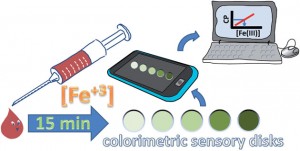Take a look at our new hot articles just published in Analytical Methods. These papers are all free to read until January 6th 2014. Enjoy the reading!
Multianalytical approach to explain the darkening process of hematite pigment in paintings from ancient Pompeii after accelerated weathering experiments
Maite Maguregui, Kepa Castro, Héctor Morillas, Josu Trebolazabala, Ulla Knuutinen, Rita Wiesinger, Manfred Schreiner and Juan Manuel Madariaga
Anal. Methods, 2014, Advance Article
DOI: 10.1039/C3AY41741G, Paper
A new method to determine the thickness of platinum nanofilm simply by measuring its electrical resistance
Yujing Sun, Zhiwei Wen, Fugang Xu, Yue Zhang, Yan Shi, Haichao Dai and Zhuang Li
Anal. Methods, 2014, Advance Article
DOI: 10.1039/C3AY41488D, Communication
A real-time cell-electronic sensing method for comparative analysis of toxicity of water contaminants
Haiying Du, Jinhua Li, Birget Moe, Claire F. McGuigan and Xing-Fang Li
Anal. Methods, 2014, Advance Article
DOI: 10.1039/C3AY41686K, Paper
Magnetic imprinted surface enhanced Raman scattering (MI-SERS) based ultrasensitive detection of ciprofloxacin from a mixed sample
Zhinan Guo, Lei Chen, Haiming Lv, Zhi Yu and Bing Zhao
Anal. Methods, 2014, Advance Article
DOI: 10.1039/C3AY40866C, Paper
Synthesis, characterization and adsorption performance of molecularly imprinted nanoparticles for tripterine by precipitation polymerization
Yuan Liu, Guifeng Zhang, Lihong Deng, Jiandu Lei, Lianyan Wang and Jing He
Anal. Methods, 2014, Advance Article
DOI: 10.1039/C3AY41772G, Paper
Selection, identification and application of a DNA aptamer against Staphylococcus aureus enterotoxin A
Yukun Huang, Xiujuan Chen, Yu Xia, Shijia Wu, Nuo Duan, Xiaoyuan Ma and Zhouping Wang
Anal. Methods, 2014, Advance Article
DOI: 10.1039/C3AY41576G, Paper













